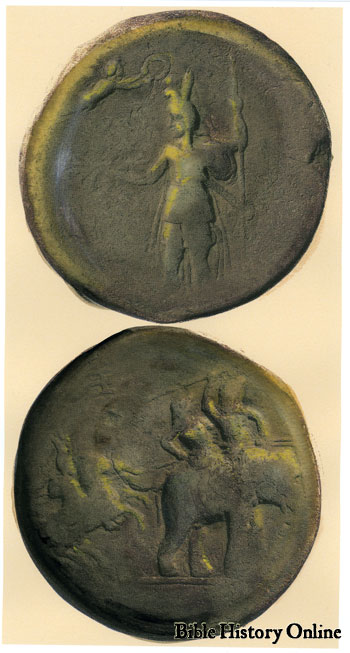
Alexander the Great Coin

Map of Alexander's Decisive battles
Material: Marble Bust
Hellenistic Period
Date: 4th Century BC
Pella, Macedonia
Location: Greek Ministry of Culture
"And as I was considering, behold, an he goat came from the west on the face of the whole earth, and touched not the ground: and the goat had a notable horn between his eyes."
DANIEL 8:5
"And the he goat is the king of Grecia: and the great horn that is between his eyes is the first king."
DANIEL 8:21
Greek Ministry of Culture Excerpt
Marble portrayal head of Alexander the Great. It is a chance find from the area of Pella, dated to the Hellenistic period.
�For I myself believe that there was at that time no race of mankind, no city, no single individual, to which the name of Alexander had not reached.� - Arrian
There are five principle historical sources from which
we gain virtually all our knowledge concerning Alexander�s life and
reign.
THE ANCIENT SOURCES
All literary evidence concerning Alexander�s life
rests fundamentally upon five biographical and historical accounts, in
addition to one ancient romance. They are:
A. Diodorus Siculus, a Greek of the
mid-first century B.C. who composed forty books of history of which
fifteen survive. Book 17 deals entirely with Alexander.
B. Quintus Curtius Rufus, a Latin
author of the mid-first century A.D., whose ten book history of
Alexander comprises his only extant work.
C. Plutarch, a classical Greek
historian, whose Life of Alexander was composed in the second century
A.D.
D. Justin, a second century A.D.
short account of Alexander, an epitome of an earlier history by one
Pompeius Trogus.
E. Lucius Flavius Arrianus (Arrian)
whose Anabasis of Alexander was written mid-second century A.D.
comprising the most complete and accurate account.
In addition there is one ancient romance:
The Alexander Romance. This work exists only in its fourth century A.D. form, and reflects a classical romantic tradition concerning Alexander. Little of the romance is serious history.
Images may be used for non-commercial use.